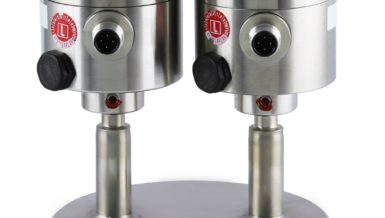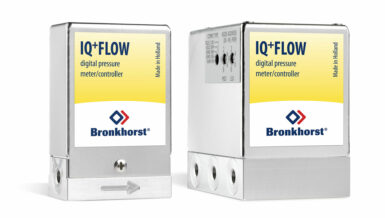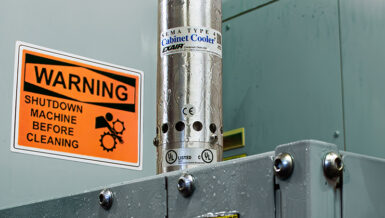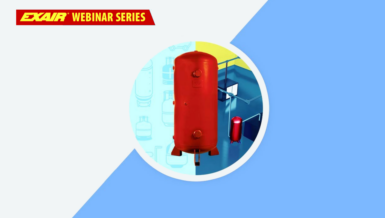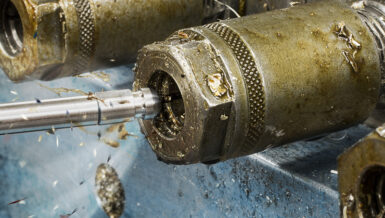Early pressure regulators
Manual pressure regulators have been in use since the early days of pneumatic devices. Since pneumatically-powered devices were used in industrial processes before electricity was widely available, the only way to control their output was to alter supply pressure levels before the device. This was performed with a manual regulator operated by hand via a top-located adjustment screw or knob. The primary use of these early regulators was simply to tame supply pressure for machinery that required significantly less operating pressure or flow. When electricity became a reliable, readily available power source, the ability to harness it in tandem with pneumatics led to even greater efficiency and ability to control machinery.
Among the first electronic control devices for pneumatic applications were I/P or E/P regulators. They convert an electronic control signal from current (I) or voltage (E) to a pneumatic pressure (P). These devices are still in use today for simple, lower pressure and flow pneumatic applications where accuracy is less important.
Modern pressure control
In the past, there was a common misconception that pneumatics lacked precision and at-scale operation required wasting a large amount of the compressed air energy produced because devices were always “on,” i.e. using air. This is known as “constant bleed,” and meant that a device would simply exhaust air if it didn’t require it for the current operation. Some electronic pressure regulators and other “smart” pneumatic devices that can receive control signals, interpret external feedback, and report other operational data helped to change this perception. This kind of data acquisition and monitoring allows an electronic pressure regulator to automatically adjust its valves’ position(s) to conserve energy. This internal decision-making means some EPRs are capable of constantly adjusting to best meet the current needs of their application, reducing their need to constantly exhaust, or bleed, excess air, like many of their I/P forefathers.
Electro-pneumatic pressure regulators achieve the same end goal as I/P regulators – they convert an electronic signal into a pneumatic pressure output. However, EPRs are significantly faster, more accurate and they can be programmed to follow a series of sequential different pressure levels for a more complicated application. Much of this progress is owed to the evolution of internal valves that do the actual air regulation. Modern electro-pneumatic valves have nearly immediate response times, usually requiring only fractions of a second to make a change in position. The two types of valves commonly found in most EPRs are solenoid and proportional. The difference between the two is simply in their range of motion. A solenoid valve is either fully open or fully closed. A proportional valve can be fully open, fully closed, or any position in between open and closed. The higher the resolution of a proportional valve, the higher the number of theoretically infinite positions it can assume.
Use across industry
Presently, all kinds of pneumatic devices, including EPRs, can be found in nearly any industry and sector of manufacturing. Electro-pneumatically controlled robotic armatures have proven themselves to be a particularly versatile platform for all kinds of applications, such as assembly, gripping, spraying, and welding. As more facilities adopt automation and Industry 4.0 initiatives, electro-pneumatic control devices continue to be implemented where the advantages over pure electronic controls are important. Pneumatics are usually selected over full electronic devices for several reasons: to make use of an existing compressed air infrastructure, lower initial upfront costs, simplicity of installation and maintenance, environmental temperature tolerance, and overall relative safety of pneumatics.





